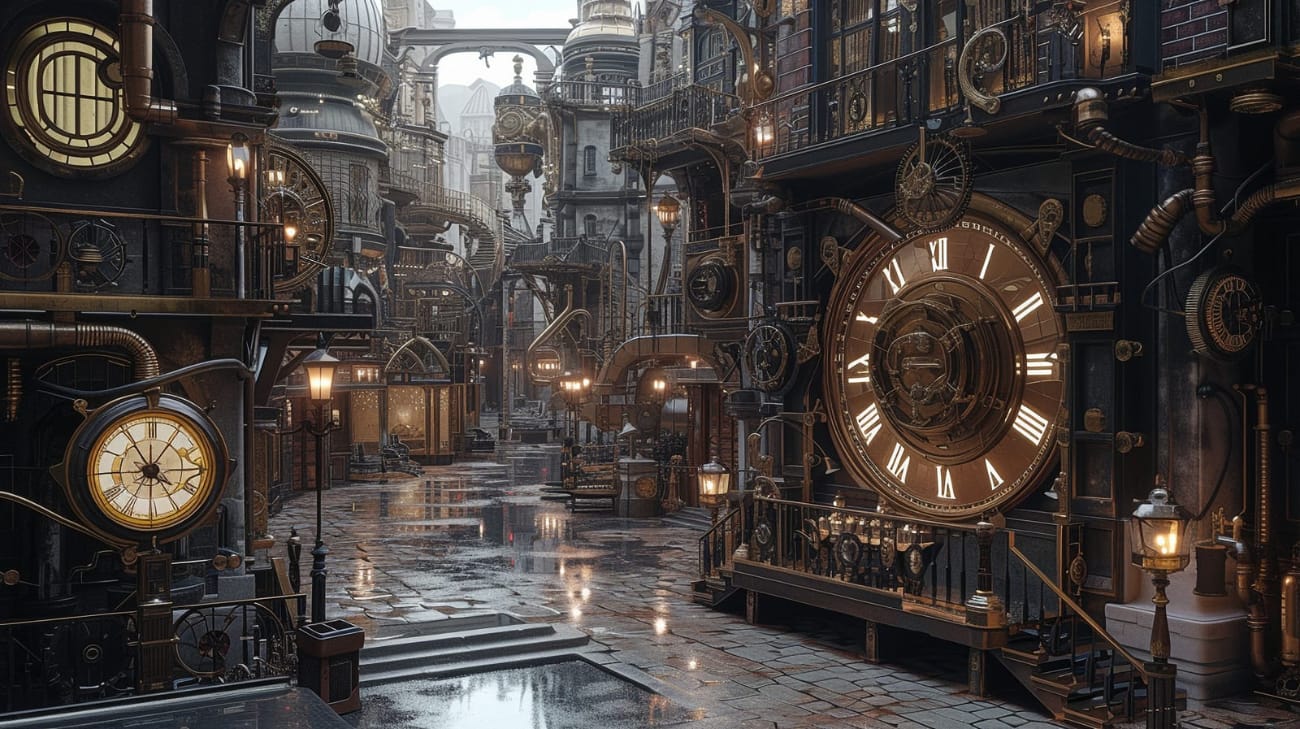Imagine a world where the past meets the future, where Victorian-style fashion blends with advanced technology. Welcome to the fascinating world of steampunk! This genre has captured the hearts of many artists, writers, and fans.
Steampunk is more than just a genre of science fiction. It’s also a subculture, an art movement, and a lifestyle. It started with 19th-century literature and has now influenced movies, TV shows, video games, and fashion.
The Origins of Steampunk
Early Influences
Steampunk began in the 19th century with authors like Jules Verne and H.G. Wells. They wrote stories set in a world powered by steam instead of electricity. Books like Verne’s “Twenty Thousand Leagues Under the Sea” and Wells’ “The Time Machine” are early examples of steampunk. These stories presented a vision of the future rooted in the technological possibilities of their time, often exploring themes of adventure, exploration, and innovation.
The Term “Steampunk”
In 1987, the term “steampunk” was officially coined by science fiction author K.W. Jeter. He used it to describe his work and the works of Tim Powers and James Blaylock, who also wrote stories combining Victorian settings with futuristic technology. The name “steampunk” was a playful reference to the “cyberpunk” genre popular in the 1980s. Jeter’s coinage helped to solidify steampunk as a distinct literary genre, paving the way for its expansion into other creative realms.
Defining the Steampunk Aesthetic
Key Elements
Steampunk has a unique look that mixes old and new elements. Inspired by the Industrial Revolution and the Victorian era, steampunk features steam-powered machines, intricate clockwork mechanisms, and lots of brass and copper. Common motifs include airships, steam engines, and fantastical inventions that blend historical styles with futuristic concepts.
Steampunk Fashion
Steampunk fashion is also distinctive, with corsets, goggles, top hats, and waistcoats. These Victorian-style clothes are often decorated with gears and other mechanical details. The color palette includes earthy tones like browns and coppers, with hints of gold and red. Fashion plays a significant role in steampunk, allowing individuals to express their creativity and connect with the genre on a personal level.
Visual Art and Design
In visual art, steampunk often features a blend of historical and futuristic elements. Artists create intricate sculptures, paintings, and installations that incorporate vintage materials and mechanical components. The result is a style that feels both nostalgic and innovative, celebrating the craftsmanship of the past while imagining new possibilities for the future.
Steampunk Subgenres
Steampunk has evolved into various subgenres, each with its own twist:
Pirate Steampunk
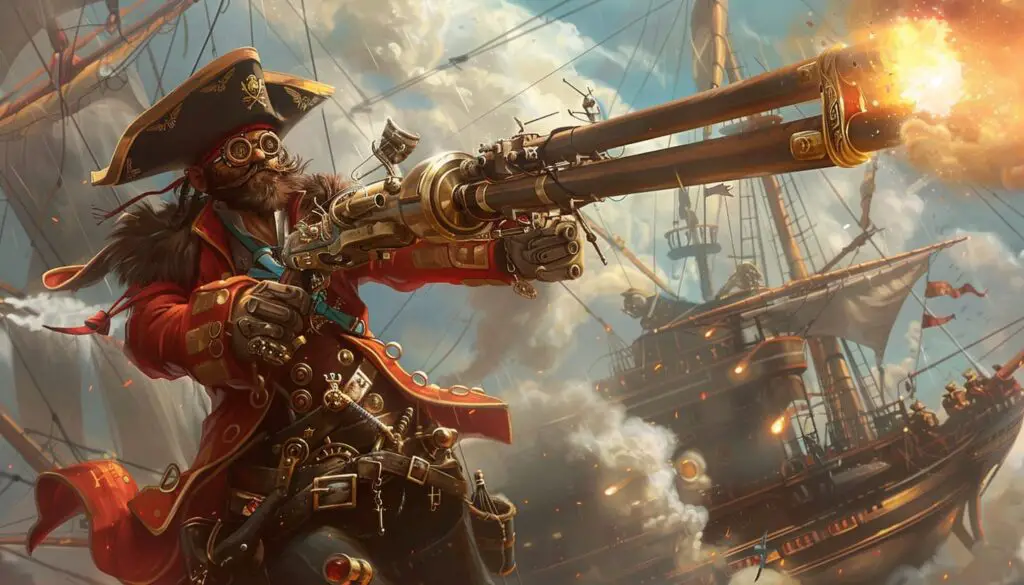
Pirate Steampunk combines pirate adventures with steampunk technology, featuring steam-powered ships and classic pirate attire. This subgenre often includes elements like airships, mechanical parrots, and steam-powered cannons, creating a unique blend of nautical adventure and retro-futuristic innovation.
Dystopian Steampunk
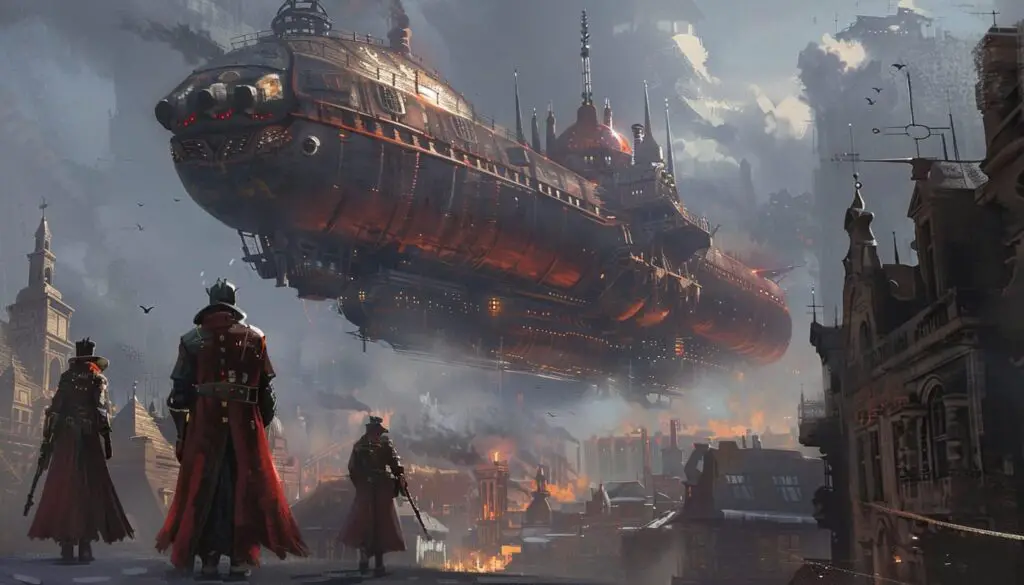
Dystopian Steampunk explores dark, oppressive societies where steam technology is used for control. These stories often depict alternate timelines where the Industrial Revolution led to environmental destruction and totalitarian regimes. Themes of resistance and survival are common, with characters fighting against the oppressive use of technology.
American West Steampunk
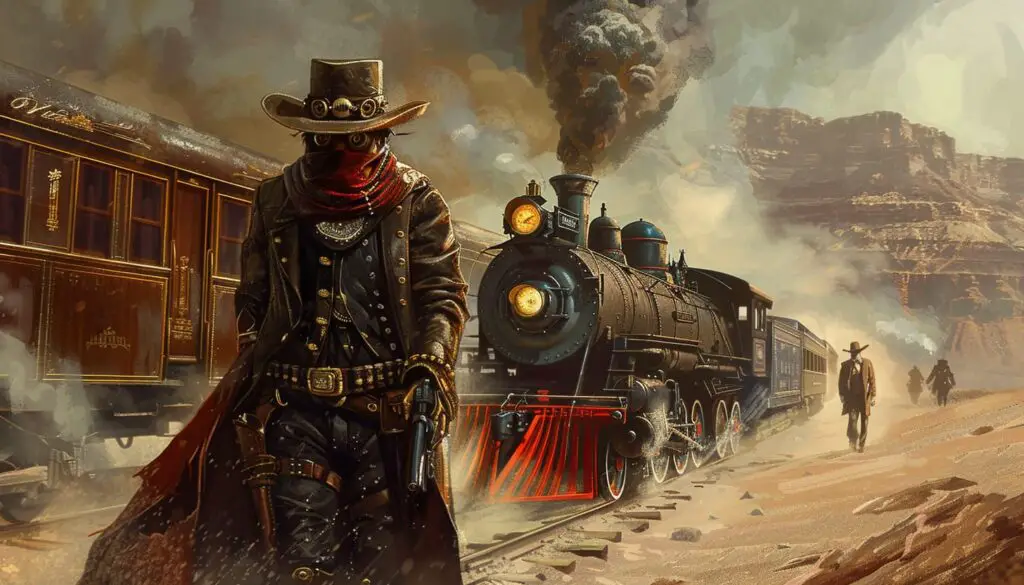
American West Steampunk blends the Wild West with steampunk elements, like steam-powered trains and cowboy gear. This subgenre reimagines the American frontier with advanced technology, featuring steam-driven gadgets, mechanical horses, and futuristic gunslingers. It combines the ruggedness of the Wild West with the ingenuity of steampunk.
Fantasy Steampunk
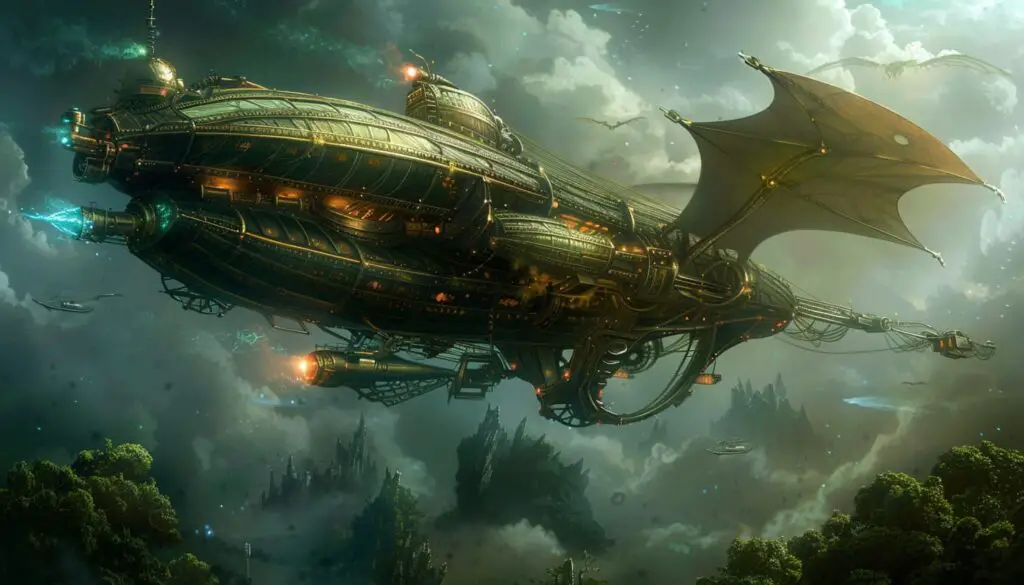
Fantasy Steampunk mixes steampunk technology with magical elements, such as enchanted airships and steam-driven automatons with supernatural abilities. This subgenre often includes mythical creatures, spellcasters, and magical artifacts, creating a world where science and magic coexist in harmony.
Dieselpunk
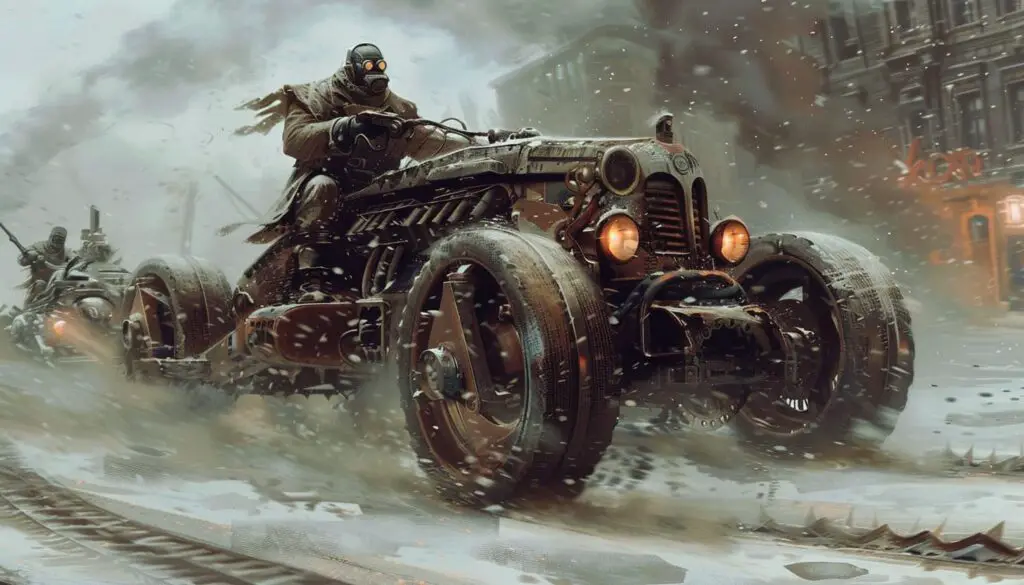
While not strictly a subgenre of steampunk, Dieselpunk is a related aesthetic that draws inspiration from the early 20th century. Dieselpunk features diesel-powered machines, Art Deco design, and the gritty, industrial aesthetic of the World War I and World War II eras. It explores themes of industrialization, war, and the tension between progress and destruction.
Steampunk in Popular Culture
Steampunk has influenced many areas of popular culture:
Literature
Steampunk’s literary roots continue to thrive with contemporary authors like China Miéville, Gail Carriger, and Philip Pullman. These writers blend historical elements with futuristic technology, creating imaginative and thought-provoking stories. For example, Carriger’s “Parasol Protectorate” series combines Victorian society with supernatural elements and steampunk inventions, offering a fresh take on the genre.
Film and Television
The visual medium has also embraced the steampunk aesthetic, with numerous films and television shows showcasing the genre’s distinctive style. Movies like “The League of Extraordinary Gentlemen”, “Sherlock Holmes”, and “Mortal Engines” have brought steampunk to the silver screen. TV series like “Warehouse 13” and “The Wild Wild West” have explored the genre’s themes on the small screen, introducing steampunk to a wider audience.
Video Games
The interactive nature of video games has proven to be an excellent canvas for steampunk narratives and aesthetics. Games like “BioShock Infinite,” “Dishonored,” and “The Order: 1886” have immersed players in richly detailed steampunk-inspired worlds. These games allow players to engage with the genre’s retro-futuristic technology and fantastical elements, providing a unique and immersive experience.
Music and Art
The steampunk aesthetic has also found its way into the realms of music and visual art. Bands like Abney Park, Steam Powered Giraffe, and Professor Elemental incorporate steampunk themes and imagery into their performances and album artwork. Their music often blends elements of folk, rock, and electronic genres with steampunk-inspired lyrics and visuals.
In the world of visual art, steampunk-inspired sculptures, paintings, and installations showcase the genre’s ability to inspire and captivate artists from diverse backgrounds. These creations often feature intricate mechanical elements, vintage-inspired materials, and a sense of whimsy that celebrates the genre’s blending of the past and the future.
The Steampunk Subculture
Conventions and Events
Steampunk has evolved into a thriving subculture with a dedicated community of enthusiasts. Conventions and events like the Steampunk World’s Fair, Steamcon, and Maker Faire bring fans together to celebrate their passion for the genre. These gatherings feature cosplay, workshops, panels, and performances, providing a platform for steampunk fans to connect, share their creations, and immerse themselves in the genre’s captivating atmosphere.
At these events, attendees often don their finest steampunk-inspired attire, showcasing their creativity and attention to detail. From intricate costumes and accessories to custom-built gadgets and inventions, these conventions are a celebration of the steampunk ethos and the community’s collective passion.
DIY and Crafting
The steampunk subculture is renowned for its vibrant DIY (Do-It-Yourself) and crafting scene. Enthusiasts often find joy in creating their own steampunk-inspired items, from clothing and jewelry to home decor and functional objects. The process of transforming ordinary items into steampunk masterpieces allows individuals to express their creativity and personalize their steampunk aesthetic.
These DIY projects can range from simple modifications, such as adding gears and brass accents to a pair of goggles, to elaborate constructions, like building a fully functional steam-powered automaton. The DIY spirit is central to the steampunk community, fostering a sense of innovation, craftsmanship, and individuality.
Lifestyle and Philosophy
For many steampunk enthusiasts, the genre transcends mere aesthetic appreciation and becomes a way of life. The steampunk philosophy emphasizes values such as self-reliance, ingenuity, and a reverence for the past. This lifestyle approach manifests in various aspects of daily life, from the way individuals dress and decorate their homes to the tools and gadgets they use.
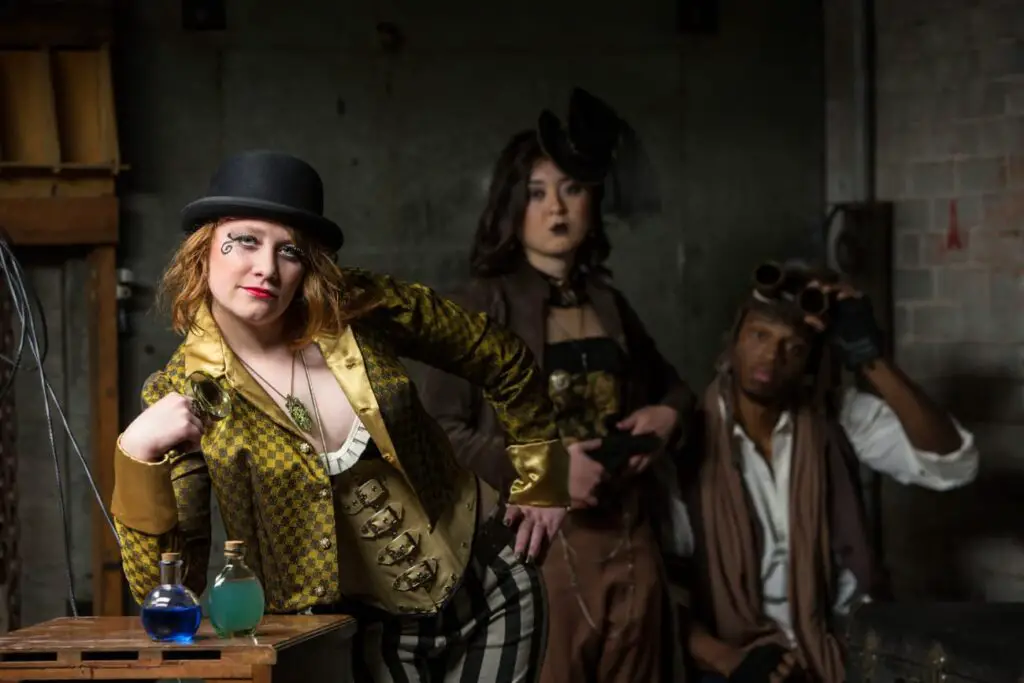
Steampunk enthusiasts often seek to incorporate the genre’s ethos into their everyday lives, blending the past and the present in a harmonious and imaginative manner. This philosophy encourages a hands-on approach to life, valuing creativity, resourcefulness, and a sense of wonder.
Steampunk in Technology and Innovation
Steampunk’s influence extends beyond art and culture into the realms of technology and innovation. The genre inspires real-world inventions and projects that combine Victorian aesthetics with modern technology.
Steampunk Gadgets and Inventions
Inventors and makers within the steampunk community create functional gadgets that reflect the genre’s aesthetic. These inventions often include steampunk-inspired computers, clocks, lamps, and even vehicles. By integrating vintage materials and design elements with contemporary technology, these creators bring the steampunk vision to life in practical and imaginative ways.
Steampunk Robotics and Engineering
The steampunk ethos has also influenced the fields of robotics and engineering. Hobbyists and professionals alike design and build steampunk robots and automatons, blending mechanical engineering with artistic expression. These projects showcase the potential for creativity and innovation within the steampunk framework, highlighting the genre’s ability to inspire cutting-edge technological advancements.
The Global Reach of Steampunk
Steampunk has a global following, with enthusiasts and creators from around the world contributing to the genre’s growth and evolution. This international appeal reflects steampunk’s universal themes of innovation, adventure, and creativity.
Steampunk in Asia
In countries like Japan, China, and South Korea, steampunk has gained popularity, influencing fashion, art, and entertainment. Japanese steampunk, for example, often incorporates elements of traditional Japanese culture, creating a unique fusion of East and West. Events like the Steam Garden in Tokyo celebrate this blend, featuring performances, workshops, and exhibits that showcase the diversity of the steampunk community.
Steampunk in Europe
Europe, with its rich history of industrialization and Victorian heritage, provides a fertile ground for steampunk creativity. Countries like the UK, Germany, and France host numerous steampunk events and gatherings, where enthusiasts can connect and share their passion. The European steampunk scene often emphasizes historical accuracy and craftsmanship, reflecting the region’s deep appreciation for its industrial past.
Steampunk in Latin America
In Latin America, steampunk has inspired artists and creators to explore the region’s unique cultural and historical context. Events like the Steampunk Mexico and the Festival Internacional Steampunk in Argentina celebrate the genre’s influence, featuring local artists, writers, and performers who bring a Latin American perspective to the steampunk aesthetic.
Embracing the Steampunk Ethos
Creativity and Self-Expression
At its core, the steampunk genre is a celebration of creativity, self-expression, and a reverence for the ingenuity of the past. It invites individuals to embrace their inner inventor, tinkerer, and visionary, reimagining the world through the lens of Victorian-inspired technology and a sense of boundless imagination.
Whether you’re a seasoned steampunk enthusiast or someone newly captivated by the genre, the steampunk ethos offers a powerful invitation to engage with the world around you in a more imaginative and empowered way. By embracing the steampunk aesthetic, you can tap into your own creative potential, transforming ordinary objects into extraordinary creations and infusing your everyday life with a touch of retro-futuristic wonder.
Community and Collaboration
The steampunk community is a testament to the transformative power of this genre, as individuals from all walks of life come together to share their passions, collaborate on projects, and collectively shape the ever-evolving landscape of steampunk. Whether it’s attending a convention, participating in a DIY workshop, or simply incorporating steampunk-inspired elements into your personal style, the opportunities to engage with this captivating genre are endless.
Steampunk encourages a collaborative spirit, fostering connections between artists, writers, makers, and fans. This sense of community is central to the genre’s appeal, providing a supportive environment where creativity and innovation can flourish.
The Future of Steampunk
As technology continues to advance and cultural trends evolve, the future of steampunk remains bright. The genre’s adaptability and universal themes ensure its continued relevance and appeal.
Emerging Trends
New trends within steampunk are constantly emerging, reflecting the genre’s ability to evolve and incorporate contemporary influences. These trends include the integration of digital technology with steampunk aesthetics, creating hybrid projects that blend the old and the new in innovative ways.
Expanding Horizons
Steampunk’s influence is likely to expand into new areas, including virtual reality, augmented reality, and other cutting-edge technologies. These platforms offer exciting opportunities for immersive storytelling and creative expression, allowing the steampunk vision to reach new audiences and inspire future generations.
Conclusion
Steampunk is a unique blend of Victorian-inspired aesthetics and futuristic technology. From its literary roots to its thriving subculture, it has captivated audiences worldwide. Steampunk celebrates human creativity and innovation, encouraging us to dream, invent, and transform our surroundings.
Embrace the ethos, don your finest steampunk attire, and discover the wonders that await in this fascinating genre. The future is ours to shape, and steampunk stands as a testament to the boundless possibilities that await.
